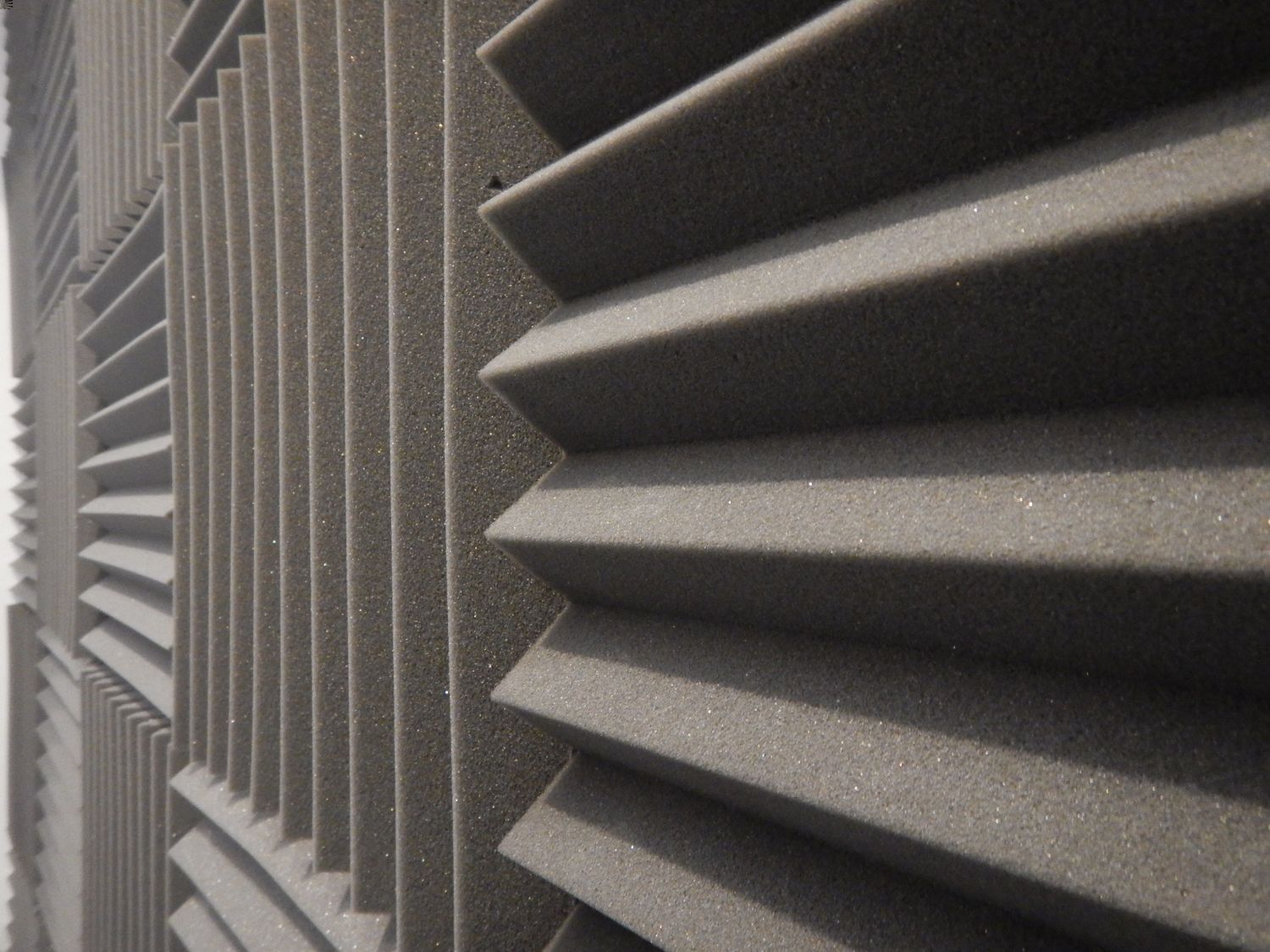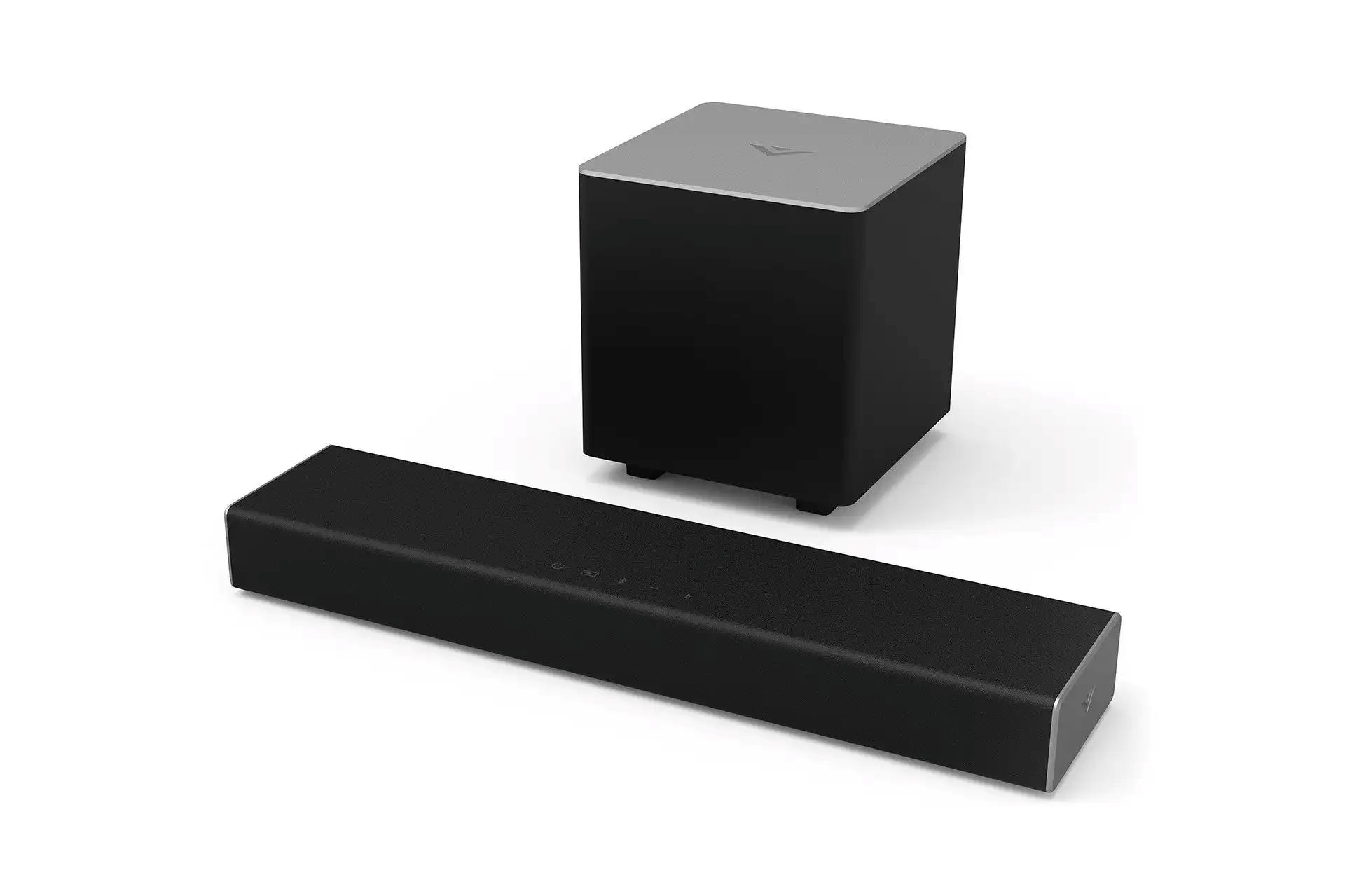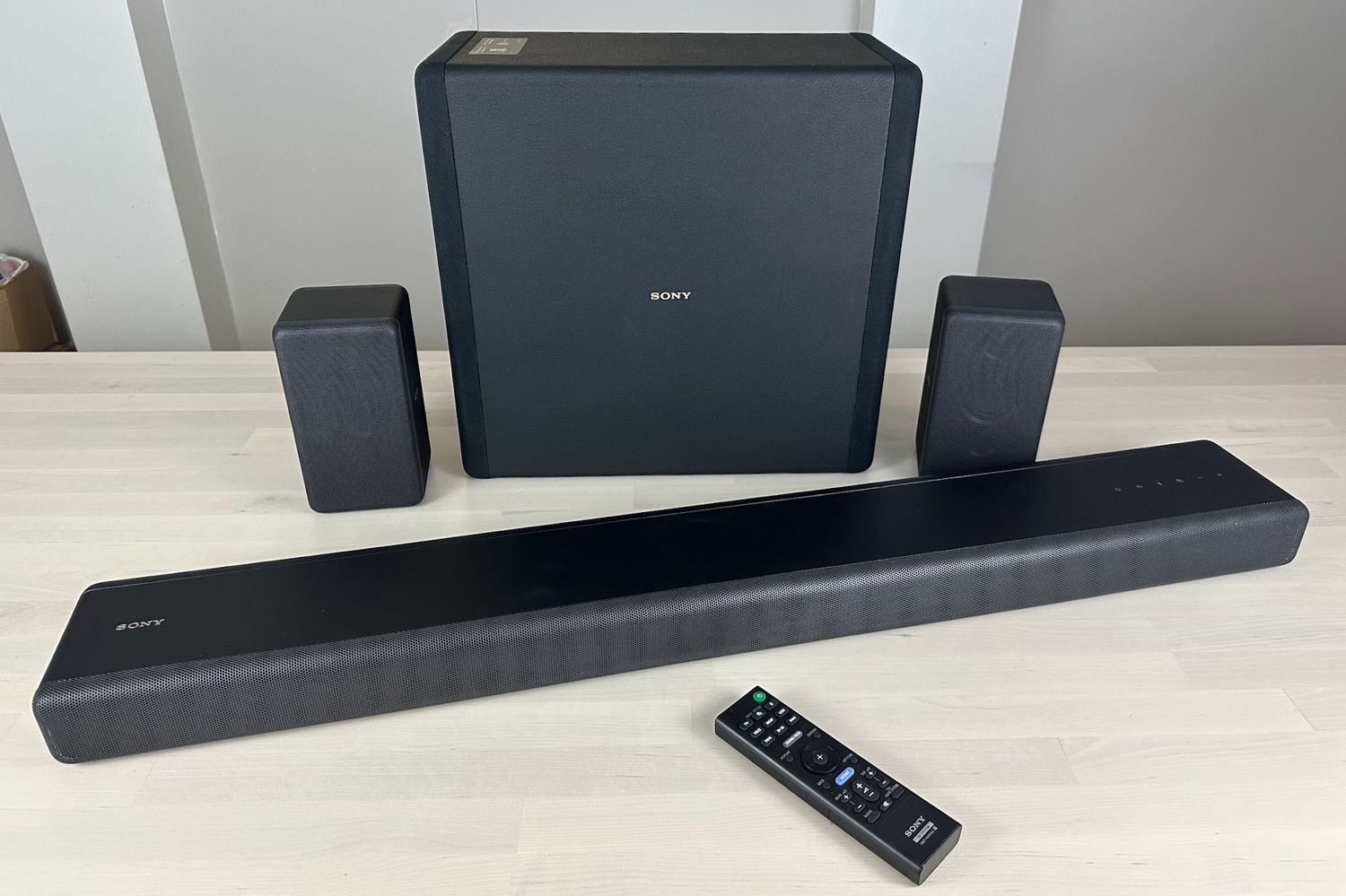Home>Devices & Equipment>Subwoofer>How Does A Wireless Subwoofer Work


Subwoofer
How Does A Wireless Subwoofer Work
Modified: January 22, 2024
Discover the magic of wireless subwoofers and learn how these powerful devices enhance your audio experience. Explore the technology behind subwoofers and their ability to deliver deep, rumbling bass.
(Many of the links in this article redirect to a specific reviewed product. Your purchase of these products through affiliate links helps to generate commission for AudioLover.com, at no extra cost. Learn more)
Table of Contents
Introduction
Welcome to the world of immersive audio! If you’re a music enthusiast or a movie aficionado, chances are you’re familiar with the term “subwoofer.” A subwoofer is a type of loudspeaker specifically designed to reproduce low-frequency sounds, adding depth and richness to your audio experience. Traditionally, subwoofers were connected to audio systems using wires, but with advancements in technology, wireless subwoofers have become increasingly popular.
A wireless subwoofer, as the name suggests, eliminates the need for pesky cables, allowing for more flexibility and convenience in speaker placement. Whether you’re designing a home theater system or setting up a music room, a wireless subwoofer opens up a world of possibilities without compromising on audio quality.
However, have you ever wondered how a wireless subwoofer actually works? In this article, we’ll delve into the basic principles, audio transmission methods, connection and pairing process, transfer protocols, and the benefits and limitations of wireless subwoofers. Whether you’re a tech enthusiast looking to expand your knowledge or someone in the market for a new audio setup, this guide will provide you with the insights you need to make an informed decision.
So, let’s get started and uncover the secrets behind the magic of wireless subwoofers!
Basic Principles of Wireless Subwoofers
Wireless subwoofers operate on the same fundamental principles as their wired counterparts. The primary goal of a subwoofer is to reproduce low-frequency sounds, commonly referred to as bass. These frequencies typically range from 20Hz to 200Hz, adding depth and impact to your audio. The basic components of a subwoofer include a driver, an amplifier, and an enclosure.
The driver, or speaker cone, is responsible for producing the sound waves. It is specifically designed to move a large volume of air, enabling it to produce deep and powerful bass. To achieve this, subwoofers typically feature larger drivers compared to other types of speakers, ensuring they can handle the low-frequency demands.
The amplifier is responsible for powering the subwoofer and providing the necessary energy for the driver to produce sound. It receives the audio signal from the source and amplifies it, allowing the driver to move back and forth rapidly, producing the low-frequency vibrations that we hear as bass.
The enclosure plays a critical role in a subwoofer’s performance. It is designed to prevent sound waves from canceling each other out, as well as to enhance the overall bass response. The most common types of enclosures are sealed, ported, and bandpass, each offering different characteristics in terms of accuracy, depth, and efficiency.
When it comes to wireless subwoofers, the basic principles remain the same. However, the key difference lies in how the audio signals are transmitted from the source to the subwoofer without the use of cables. Instead of a physical connection, wireless subwoofers utilize various wireless technologies to establish a reliable and seamless audio connection.
Next, we will explore the different methods of wireless audio transmission used in wireless subwoofers, providing you with a deeper understanding of how these systems operate.
Wireless Audio Transmission
Wireless subwoofers employ different methods of audio transmission to establish a seamless connection with the audio source. Let’s explore some of the common wireless technologies used in transmitting audio signals to a wireless subwoofer:
- Bluetooth: Bluetooth is a widely adopted wireless technology that allows for easy and convenient audio streaming. With Bluetooth-enabled devices, such as smartphones, tablets, or computers, you can pair your wireless subwoofer effortlessly. However, it’s important to note that Bluetooth has a limited range, typically up to 30 feet, and may experience signal interference in crowded environments.
- Wi-Fi: Wi-Fi is another popular wireless technology used in audio transmission. With Wi-Fi, you can connect your wireless subwoofer to your home network, enabling you to stream audio from various sources such as music streaming services, networked media servers, or even online radio stations. Wi-Fi offers a more extensive range compared to Bluetooth and is less susceptible to signal interference.
- RF (Radio Frequency): RF technology uses radio waves to transmit audio signals between the audio source and the wireless subwoofer. This method ensures a stable and reliable connection, even over longer distances. However, RF wireless subwoofers may require a separate transmitter and receiver, adding to the overall setup complexity.
- IR (Infrared): Infrared technology uses infrared light signals to transmit audio. It requires a direct line of sight between the transmitter and the wireless subwoofer, making it less flexible and limited in range. IR wireless subwoofers are not as common today, as they have been mostly replaced by more advanced technologies.
These various wireless transmission technologies offer different ranges, signal strengths, and connection capabilities. It’s important to consider your specific needs and the available connectivity options of your audio source when choosing a wireless subwoofer.
Now that we understand the fundamentals of wireless audio transmission, let’s dive into the process of connecting and pairing a wireless subwoofer with your audio system in the next section.
Wireless Subwoofer Connection and Pairing
Connecting and pairing a wireless subwoofer with your audio system may vary depending on the specific model and technology used. However, the general process typically involves the following steps:
- Powering on the Subwoofer: Start by plugging in the power cord of your wireless subwoofer into a power outlet. Ensure that the subwoofer is in standby mode and ready to pair with your audio system.
- Locating the Audio Source: Identify the audio source you want to connect to the wireless subwoofer. This could be a receiver, a home theater system, or a standalone audio device such as a smartphone or tablet.
- Entering Pairing Mode: Depending on the wireless technology used, the subwoofer may need to be put into pairing mode. This can typically be achieved by pressing a dedicated button or following specific instructions provided by the manufacturer.
- Pairing with the Audio Source: Now, navigate to the settings of your audio source and search for available wireless devices. Once the subwoofer is detected, select it to initiate the pairing process.
- Completing the Pairing: Follow the on-screen instructions, if any, to complete the pairing process. The audio source should confirm that the connection with the wireless subwoofer has been successfully established.
It’s important to note that some wireless subwoofers may require additional steps, such as entering a PIN code or password during the pairing process. Refer to the user manual of your specific model for detailed instructions on how to properly connect and pair your wireless subwoofer.
Once the pairing process is complete, your audio source should recognize the wireless subwoofer as an available sound output option. You can now enjoy the deep and immersive bass provided by your wireless subwoofer, enhancing your audio experience.
Now that we’ve covered the connection and pairing process, let’s explore the different transfer protocols commonly used in wireless subwoofers and their impact on audio performance in the next section.
Wireless Subwoofer Transfer Protocols
Wireless subwoofers utilize different transfer protocols to ensure reliable and high-quality audio transmission. These protocols govern how the audio signals are encoded, transmitted, and decoded by the wireless subwoofer. Let’s take a look at some of the commonly used transfer protocols:
- Lossless Compression: Lossless compression algorithms, such as FLAC (Free Lossless Audio Codec) or ALAC (Apple Lossless Audio Codec), preserve the original audio quality while reducing the file size. These protocols ensure that the audio signals sent to the wireless subwoofer maintain their integrity, resulting in accurate and detailed bass reproduction.
- Wireless Standards: Wireless subwoofers often employ standard wireless protocols, such as Bluetooth, Wi-Fi, or RF, to transmit audio signals. These protocols have their own encoding and decoding mechanisms to ensure the efficient transfer of audio data between the source and the subwoofer.
- Audio Sync: To maintain synchronization between the wireless subwoofer and other speakers in the audio system, some wireless subwoofers utilize specialized protocols that prioritize audio synchronization. This ensures that the bass response remains aligned with the rest of the audio, preventing any latency or delay.
- Proprietary Transfer Protocols: Some manufacturers develop their own proprietary transfer protocols to ensure optimal performance and seamless integration between their wireless subwoofers and audio systems. These protocols are designed to optimize audio transmission and reduce the risk of interference or signal degradation.
The choice of transfer protocol can affect the overall audio performance and user experience when using a wireless subwoofer. Lossless compression and standard wireless protocols offer reliable and high-quality audio transmission, while specialized synchronization protocols ensure precise bass response.
However, it’s important to note that the quality of audio transfer protocols is just one factor that influences the audio performance of a wireless subwoofer. Other elements, such as the quality of the driver, amplifier, enclosure design, and room acoustics, also play a crucial role in shaping the overall sound experience.
Now that we understand the different transfer protocols, let’s explore the benefits and limitations of wireless subwoofers in the next section.
Benefits and Limitations of Wireless Subwoofers
Wireless subwoofers offer several advantages over their wired counterparts, but they also have some limitations. Understanding these benefits and limitations can help you make an informed decision when considering a wireless subwoofer for your audio system. Let’s explore them:
Benefits of Wireless Subwoofers:
- Flexible Placement: One of the biggest advantages of wireless subwoofers is the freedom they provide in speaker placement. Without the need for long cables, you can position the subwoofer wherever it sounds best in your room, optimizing the low-frequency response and overall audio experience.
- Easy Installation: Wireless subwoofers eliminate the hassle of running cables through walls or under carpets. This makes the setup process quick and easy, especially for those who are not technically inclined or have limited space for cable management.
- Reduced Clutter: By eliminating the need for physical cables, wireless subwoofers help reduce clutter and maintain a clean and organized space. This is particularly beneficial for those who prefer a minimalist aesthetic or have limited space in their home theater setup.
- Scalability: Wireless subwoofers can be easily added to existing audio systems without the need to reconfigure or expand the cable infrastructure. This scalability allows you to upgrade or expand your audio setup in a convenient and cost-effective manner.
- Versatility: Wireless subwoofers can be used with a wide range of audio systems, including home theaters, stereo setups, and soundbars. This versatility provides flexibility in choosing an audio setup that suits your needs and preferences.
Limitations of Wireless Subwoofers:
- Signal Interference: Wireless subwoofers, especially those using Bluetooth or Wi-Fi, can be susceptible to signal interference from other devices or obstacles in the vicinity. This interference may lead to occasional audio dropouts or reduced range.
- Latency: Some wireless subwoofers may introduce a slight delay in audio transmission, resulting in a potential mismatch between the low-frequency response and the rest of the audio. While this latency is often minimal, it can be noticeable for those with a keen ear for audio synchronization.
- Range Limitations: Wireless subwoofers have a limited range compared to wired subwoofers. The effective range can vary depending on the wireless technology used and the surrounding environmental factors.
- Connection Stability: Depending on the specific wireless technology and the quality of the components, wireless subwoofers may experience occasional connectivity issues or signal dropouts. This can impact the reliability of the audio transmission and the overall listening experience.
It’s important to consider these benefits and limitations based on your specific requirements and preferences before investing in a wireless subwoofer.
Now that we have explored the benefits and limitations, let’s shift our focus to important factors to consider when choosing a wireless subwoofer in the next section.
Factors to Consider When Choosing a Wireless Subwoofer
When selecting a wireless subwoofer for your audio system, there are several important factors to consider. These factors can greatly impact the performance and compatibility of the subwoofer with your setup. Let’s explore them in detail:
- Audio Quality: The most crucial aspect to consider is the audio quality produced by the wireless subwoofer. Look for a subwoofer that can accurately reproduce deep bass frequencies without distorting or overpowering the rest of the audio. Pay attention to the driver size, power rating, and frequency response specifications to ensure optimal sound reproduction.
- Compatibility: Ensure that the wireless subwoofer is compatible with your audio system or devices. Check for compatibility with the specific wireless technology used, such as Bluetooth or Wi-Fi, as well as any required software or firmware updates.
- Connectivity Options: Consider the available connectivity options of the wireless subwoofer. Besides wireless connectivity, some models may also offer wired connections for added flexibility. This way, you can connect your subwoofer to different audio sources and systems based on your needs.
- Size and Placement: Evaluate the physical dimensions of the wireless subwoofer and consider whether it will fit comfortably in your space. Additionally, consider the placement options available in your room to ensure optimal bass response and integration with the rest of your audio setup.
- Room Size and Acoustics: Take into account the size and acoustics of the room where the wireless subwoofer will be placed. Larger rooms may require more powerful subwoofers to fill the space with deep bass, while smaller rooms may benefit from compact and adjustable subwoofers to avoid overwhelming the sound.
- Brand Reputation and Reviews: Research the reputation of the brand and read reviews from other users to gauge the overall quality and reliability of the wireless subwoofer. Look for renowned brands known for producing high-quality audio equipment to ensure a satisfactory experience.
- Budget: Finally, consider your budget and find a wireless subwoofer that offers the best value for your money. While it’s important to invest in a subwoofer that meets your audio needs, consider finding a model that fits your budget without compromising too much on audio quality.
By considering these factors, you can make a more informed decision and find the wireless subwoofer that best suits your needs and preferences.
Now that we have covered the important factors, let’s conclude our guide on wireless subwoofers.
Conclusion
Wireless subwoofers have become increasingly popular due to their flexibility, convenience, and ability to deliver immersive and powerful bass. By understanding the basic principles of wireless subwoofers, including their components and wireless audio transmission methods, you can make an informed decision when choosing the right subwoofer for your audio system.
While wireless subwoofers offer benefits such as flexible placement, easy installation, and reduced clutter, they do have some limitations, including potential signal interference and latency issues. However, with advancements in wireless technology and the availability of various transfer protocols, these limitations are being minimized, allowing for a more seamless and reliable connection.
When selecting a wireless subwoofer, consider factors such as audio quality, compatibility, connectivity options, size and placement, room size and acoustics, brand reputation, and your budget. By considering these factors, you can find a wireless subwoofer that provides optimal performance and seamlessly integrates into your audio setup.
Whether you’re creating a home theater system or enhancing your music listening experience, a wireless subwoofer can take your audio to the next level, adding depth and richness that will immerse you in the sound. So, dive into the world of wireless subwoofers, explore the options available, and enjoy the captivating and powerful bass that these devices have to offer.
Now, it’s time to bring your audio experience to life with a wireless subwoofer!











